I recently returned from a couple weeks of field work in the Telemark Region of Norway. The Telemark is widely known for its Stave Churches, the birth place of Telemark skiing, very cold winters (like all of Norway), and funky cottages on stilts.
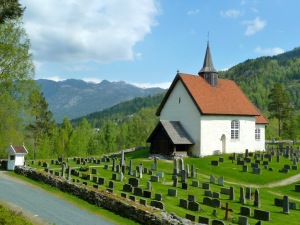 |
12 century stave church in Seljord
One legend recalls that the church really was built by a goblin
Just as he finished, he fell to his death from the tower
Grass will not grow on the spot where he landed |
|
|
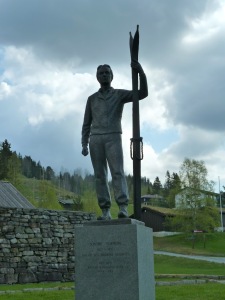 |
Monument to Sondre Norheim, the father of Telemark Skiing in Morgedal
An identical statue can be found in Minot, North Dakota |
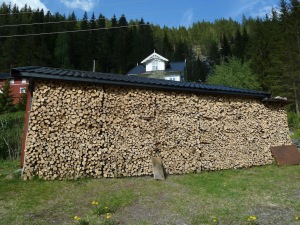 |
| Cache of wood for the long, cold winter |
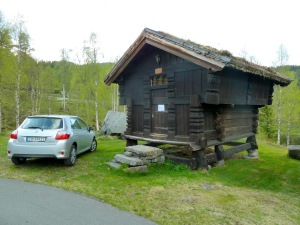 |
| Cottages with shaky foundations |
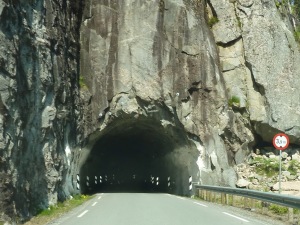 |
| 1 km long tunnel wide enough only for one car |
The Telemark region is also home to the lesser known Vemork hydroelectric plant. This facility played an important role in helping the Nazis get one step closer to building an atomic bomb during World War II. The valley of Rjukan was initially a peaceful pastoral valley surrounded by steep cliff walls and tremendous waterfalls cascading into the valley from all sides. In 1911, a 60 megawatt power plant was built primarily for the purpose of producing artificial fertilizer (the first plant to use Nitrogen fixation on a production scale). This new industry drastically changed the Rjukan valley through the influx of laborers and massive construction and import/export projects.
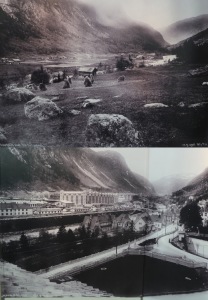 |
| Rjukan Valley in 1907 (above) and 1916 (below) |
A natural byproduct of Nitrogen fixation is deuterium oxide (heavy water). Heavy water was primarily used in the development of nuclear power plants and weapons (primarily hydrogen bombs). In nuclear power generation, heavy water acts as an excellent neutron moderator that stabilizes the fission chain reactions of uranium-235. Through neutron moderation, a small amount of heavy water is converted into tritium which can in turn be used to build hydrogen bombs. This is the primary reason the Nazis were so interested in the Vemork power plant in World War II. When the Nazis took over Oslo (and thus all of Norway) on the 9th of April, 1940 they bee-lined it to Vemork to begin heavy production. Luckily, within the few weeks prior to the invasion, the current stock piles of heavy water were smuggled to France. To make a long story short, the Nazis make massive stock piles of heavy water, but were unable to export it as Norwegian expatriates stuck back into the country and destroyed the heavy water plant and blew up the ferry transporting the entire heavy water stockpile (with civilians and all).
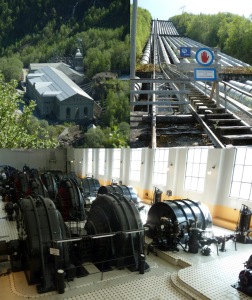 |
| Vemork hydroelectric plant |
I was in Norway in late May to collect samples of the syn-orogenic sediments of the 0.9 to 1.1 billion year old Sveconorwegian orogeny (more or less the Norwegian equivalent to the Grenville orogeny). These samples will be used to better understand the evolution of the orogeny through time using detrital zircon geochronology.
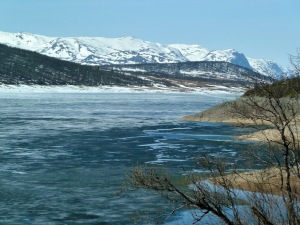 |
| Near Rjukan many of the lakes were still slushed over |
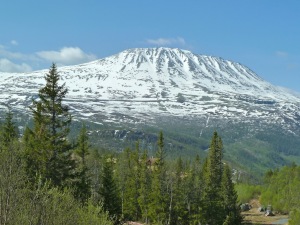 |
| Gaustatoppen (1883m/6178ft) made of 1.3 Ga metasediments |
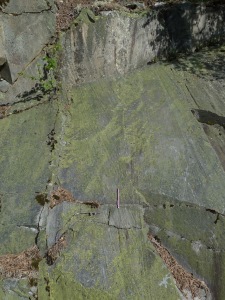 |
| Low-angle cross beds in vertical pre-orogenic sediments (up is to the right) |
Further to the south the weather was much nicer and the snow was all melted. The landscape is typical of heavily glaciate terranes with steep walled u-shaped valleys, although most are filled with lakes. The dense vegetation makes finding outcrop difficult so, as in most temperate regions, road cuts are the best place to find what you are looking for.
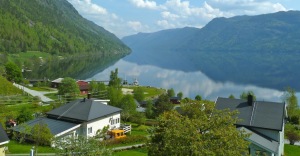 |
| The village of Lardal on Lake Bandak |
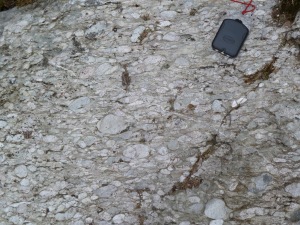 |
| Metaconglomerate in the Eidsborg Formation |
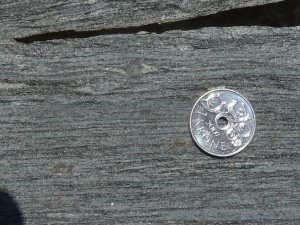 |
| Garnet bearing mylonite in the Røynstaul formation |
Inter-layered in the sedimentary quartzites are thick layers of metamorphosed basalt flows and minor rhyolite tuffs. Although this might seem bizarre to have thick alternating units of quartzite and basalt (amphibolite) in a syn-orogenic tectonic setting, consider that many orogenic systems have similar relationships in the hinterland rift basins of Tibet and the Basin and Range of North America. Both of these regions experienced rifting during the initial stages of orogenic collapse. The chemistry of these amphibolites will provide helpful clues into the type of material and degree of melting that contributed to these basalts.
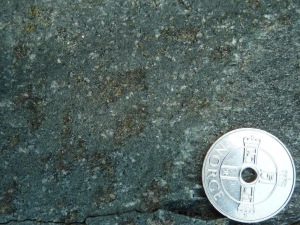 |
| Plagioclase + Amphibole ± Biotite ± Pyroxene(?) Amphbolite |
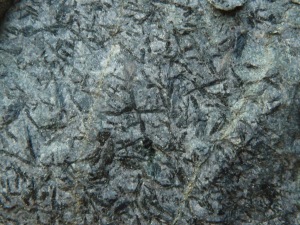 |
| Large phenocrysts of amphibole in a plagioclase-rich amphibolite (field of view is 5 cm) |
Intruding the uppermost syn-orogenic units is a series of ferroan (A-type) hornblende, biotite granites with minor pegmatites. It is interesting that in a presumably collisional orogeny, anorogenic granites (generally found associated hot spots and rifting) are present rather than S-type synorogenic granite that are common in the Indo-Asian collision. Although the Sveconorwegian and Grenville orogeny has been considered a classic example of a collisional orogeny, there are some that posit the orogeny was simply a long-lived accretionary margin similar to the Andes. Perhaps these granites have the answers.
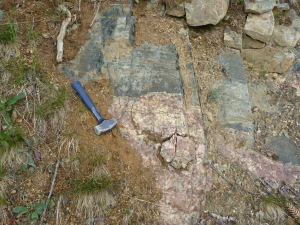 |
| Hornblende-biotite Pegmatite intruding the Eidsborg Formation |
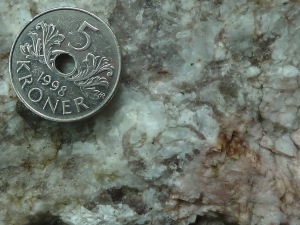 |
| Close-up of above pegmatite. Notice the fabulous K-feldspar cleavage in the lower right feldspar. |
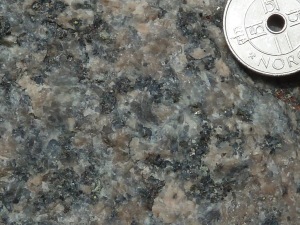 |
| Close up of typical hornblende, biotite granite from the area (Vehuskjerringa granite) |
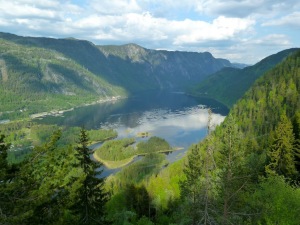 |
| Overlooking the western end of Lake Bandak and the town of Dalen |
 This work is licensed under a Creative Commons Attribution-NonCommercial-ShareAlike 4.0 International License.
This work is licensed under a Creative Commons Attribution-NonCommercial-ShareAlike 4.0 International License.
















![]() This work is licensed under a Creative Commons Attribution-NonCommercial-ShareAlike 4.0 International License.
This work is licensed under a Creative Commons Attribution-NonCommercial-ShareAlike 4.0 International License.


